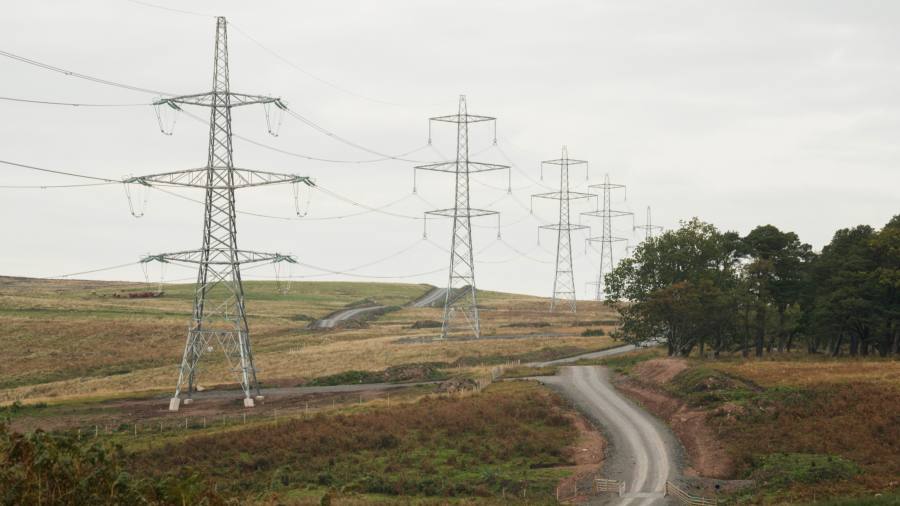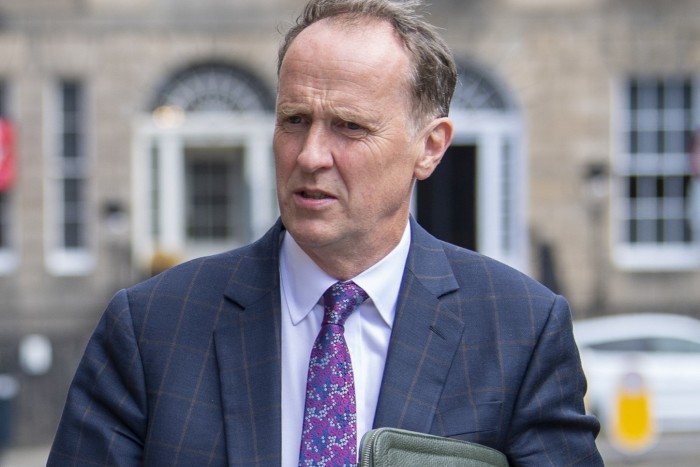
Receive free UK energy updates
We’ll send you a myFT Daily Digest email rounding up the latest UK energy news every morning.
Housing campaigners and developers often blame the “not in my backyard” syndrome for the UK’s chronic housing shortage. They are often right to do so.
A whole new front in the Nimby wars is breaking out over Britain’s energy infrastructure. People are just as likely to be riled by a string of pylons or a boxy substation covering the area of multiple football pitches as they are by a new housing development.
Yet to reach the UK’s 2050 net zero emissions targets, it is a burden many communities will have to bear. Most power lines are in the wrong place to support an electricity system that will in the future be based around wind farms in remote locations.
Rewiring the UK will stir up a hornets’ nest in some communities. The government or energy companies will have to think seriously about how to compensate those affected.
National Grid and Ofgem have identified an initial 26 onshore electricity transmission projects to meet the government’s goal of increasing Britain’s offshore wind capacity from more than 13GW to 50GW by 2030. Many more will be required to reach the overarching 2050 target.
Past electricity grid upgrade schemes faced strong opposition. Take the Beauly-Denny overhead power line in Scotland. This cuts through the Highlands to transport electricity from northerly wind farms to areas of demand in the central belt. It took more than 10 years to build, given the strength of feeling against it. It finally became fully operational in 2015.
More recently, communities in areas such as Suffolk have taken legal action over ugly onshore grid infrastructure required to support wind farms off the East Anglian coast.

The UK planning system gives campaigners leverage developers lack. It is “designed around consultation, not . . . around delivery”, according to Jeegar Kakkad, director of future of Britain policy at the Tony Blair Institute for Global Change.
Too much focus goes on who needs to be consulted and why, rather than “what needs to be built, when?” Kakkad said. The institute has calculated that at the current rate of progress, the country will not have an electricity grid that fits a clean energy system until 2084.
Energy companies are pushing hard to reduce the time taken over planning on any project to as little as two years. National Grid is running a “great grid upgrade” campaign to promote infrastructure work to the public.
Scottish Power’s chief executive Keith Anderson has called for a “national conversation” about what power lines will be needed, where and how to compensate communities.
“[Otherwise] what you’ll end up doing, is you’ll go from town to town all the way down the length [of a planned transmission line] having the same conversation in every local community,” he said. “If you do that, we will be in a five-to-six years planning process.”
Anderson is right: the industry needs to think ahead. Campaigners in Suffolk also blame a lack of foresight for recent clashes. They insist they have no truck with offshore wind projects but are protesting against the poor design for onshore infrastructure.
Historically, offshore wind developers have tackled grid connections as single projects. They favour the closest, cheapest location. But developers are now planning a large number of energy projects for England’s east coast.

They must agree on an overarching design to connect all schemes in both an undisruptive and cost-effective way, argued Fiona Gilmore, who heads Suffolk Energy Action Solutions, a local campaign group. Gilmore’s group is lobbying for an offshore grid, which countries such as Belgium are pursuing.
Policymakers are trying to become more flexible. National Grid Electricity System Operator — the organisation that oversees Britain’s power system and is due to be renationalised — last year produced a “holistic network design”.
This mapped out where big grid upgrades will be required. It informed the initial 26 projects deemed necessary for the 2030 offshore wind target.
One big problem with grid upgrades is that towns and villages that host power lines may receive little economic benefit in return. The Tony Blair Institute recommends offering all affected communities a set menu of potential benefits from which they could choose.
The tricky part will be judging how generous those benefits can be without steeply increasing building costs. Locals whose house prices are hit will demand hefty compensation. Token gestures such as solar panels for a local village hall simply won’t cut it.





